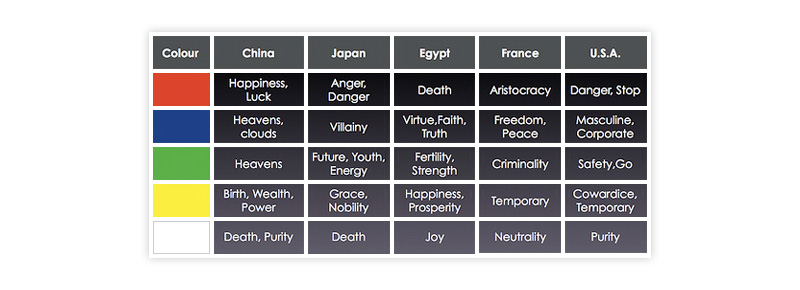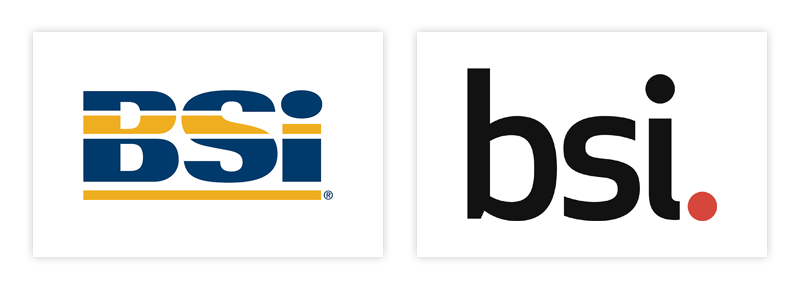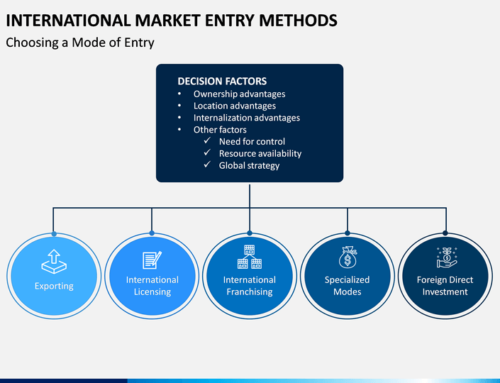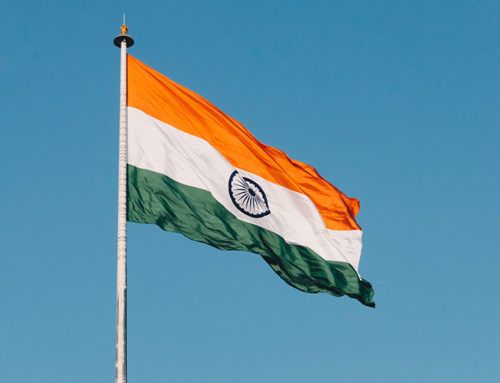When moving into a new country or territory for the first time, no matter the size of your company, or if this is the first time and ‘only’ to a country where you share the same language, it is still vital that you consider does my brand translate?
It is easy to think that you can just move your brand across borders in this age of globalisation as we are surrounded by brands and brand messages that are global. Nike’s brand and message ‘Just do it’ is known and loved in Shanghai just as it is on the streets of Boston. The same colours and brand swoosh are used, the same overarching communications strategy where famous sports personalities endorse Nike in a variety of ways, and the same presence at high profile sporting events. Coca-Cola, BMW, Apple, L’Oreal, Ford, Nescafé and P&G’s Head & Shoulders are all other global brands that are familiar and loved the world over.
However, what is often not appreciated is that the companies behind these brands have spent years and $millions on ensuring that their brand works well locally in every country – and that sometimes there have been failures where the move across borders hasn’t worked.
Take Pepsi’s first foray into China when insufficient attention to translation nuances meant a selection of characters for their marketing message “Come alive with the Pepsi generation”, actually meant “Pepsi brings your ancestors back from the grave.” Nike had to recall thousands of products when a decoration intended to resemble fire on the back of the shoes resembled the Arabic word for Allah; and Toyota’s Fiera car proved controversial in Puerto Rico, where ‘fiera’ translates to ‘ugly old woman’.
So, when preparing to enter a new market, there are a number of factors that you will need to consider as people in different countries and regions will respond to ‘brands’ differently due to inherent cultural differences. Brand ‘propositions’, and the elements that make up a brand’s identity – colours, icons or symbols, straplines or taglines, and key visuals – will evoke different responses from people in different countries and this should be considered thoroughly before you enter the market.
Assuming your brand will be relevant and appealing in a new market presented exactly as it is in your home market – that it translates – can lead to your entire market entry failing.
Brand Identity
Your brand comprises of a number of elements that together create your brand identity that will convey meaning, personality and values. This will be through the use of colours, symbols, visuals, communications campaigns, as well as your proposition, strapline and brand name itself. Some of this meaning will be largely understood subconsciously in consumers’ minds in different settings, situations and cultures: as such, the understanding of what your brand is can vary by market.
10 Key Brand Factors to Consider When Entering a New Market
Each element can create issues in translation so a thorough check of your brand in a new market is essential.
1. Proposition
Each market is unique: different customers with different needs, different competitors and market conditions will mean you will need to determine whether your brand’s proposition is appropriate to the new market and if so how?
Your proposition summarises why a consumer should buy your product or use your service – how it adds more value, better solves a problem, or meets a desire more than other similar competitive offerings – and it will communicate a unique and relevant benefit.
As you enter a new market, the needs, problems and desires of consumers and the competitive landscape are likely to be different. You will need to assess and potentially adapt your proposition in order that it appeals to the target market and is competitively compelling.
Consider Starbucks when it entered China – not a coffee market, but potentially the largest drinks market it could capture in the world. Starbucks dropped coffee from its proposition and logo, and marketed itself as a place for refreshing drinks.
Similarly, as McDonalds expanded into new markets, it redefined its proposition away from its focus on ‘hamburgers’, to offer affordable fast food. This enabled it to cater to local tastes and capitalise on new markets, so in India you get Chicken Maharaja-Macs and in New Zealand, Kiwi Burgers.
2. Brand Name Translation
It is essential that you understand whether or not you can take your Brand name exactly as it is into the new market. This means understanding whether the sound, spelling, pronunciation and meaning are appropriate and will work. Literal translations, and translations not undertaken by locals in the local market can be disastrous.
Vicks introduced its cough drops into the German market without realising that the German pronunciation of “v” is “f” making “Vicks”, slang for sexual intercourse a mistake that could have been easily avoided with a local check.
Conversely, when BMW entered the Chinese market, it researched various options and decided on a creative translation (‘baoma’ – ‘precious horse’) as horses are considered heroic and highly prized in China, and the implication is that their cars run fast and for a long time.
3. Company Name Translation
It is also worth checking your company name as in certain markets, such as Japan, the corporation behind the brand is important for establishing trust and credibility. Also, for B2B products and services, your company name will be important.
When Nestle initially launched in Japan they simply adapted their company name to deal with the fact that there is no ‘l’ sound or corresponding character and became “Nesuru”. Their focus was on building their brand Nescafe and that got all of the attention. However, some years later, recognising the importance of the company brand, and with the growth of globalisation, they had to spend ¥millions rebranding themselves to Nestle in order for partners, suppliers and customers to understand that it was actually the same global company behind the brand.
4. Colours
Colour is absolutely key to brand recognition – up to 80% of brand recognition comes from colour. It also can play a vital role in signifying product type or market sector, (e.g., red has become the colour associated with cola brands), as well conveying something of the brand personality and ‘position’ within the market (e.g. leader versus challenger – think IBM versus Apple where Apple was the first computer company to challenge the dominant leaders and bring bright colours to a colourless market of greys and dark blues).
Whilst there are some universal meanings of colours, blue for cold, red for hot and so on, colour is also culturally contextual and the subconscious meaning can vary dramatically between markets. This will affect how your brand appeals and is accepted.
For example, some simple examples are that in the west white is for weddings, whereas in much of Asia, white is for death and funerals. Red in Chinese markets conveys luck and festivity and is also used for weddings, but in the US red can often imply cheapness.

Take this a step further, and you have to consider the potential local interpretations of your international branding and the colours you use, which can affect the perception of, and empathy towards, your brand. When UPS entered Spain it had to repaint all it’s brown trucks because brown represented the country’s hearses. In Germany, they had to replace the driver’s uniforms because brown uniforms were last worn there in 1945.
Certain ‘taboos’ can also dictate the ‘acceptable’ use of colour, for example, in Egypt, the country’s national colour of green is considered unacceptable for packaging because religious leaders once wore it.
5. Symbols
The earlier example of the Nike flame decoration on its trainers in the Middle East is an example of a direct problematic symbol relating to the brand. What looks like one thing to one customer in one country, can appear to be something entirely different in another country.
There are additionally indirect ‘symbols’ that can affect your brand and you need to be aware of outside influences on the success of your brand when you move to unfamiliar markets.
When the Bank of China built its architecturally imposing Head Office in Hong Kong prior to the takeover of Hong Kong by China, the architects placed parallel antennae on the top of the building which the locals thought resembled chopsticks stuck up in rice – a cultural symbol for bringing bad luck. As a consequence, the bank became known locally as the ‘bad luck Bank’.
6. Strapline
Your strapline will typically embody your business proposition. If research has shown your proposition can apply to the new market, it is still vital you check whether your strapline works: a literal translation from your home market may not always be the best way to communicate your proposition.
The American Dairy Association replicated its “Got Milk?” campaign in Spanish-speaking countries where it was translated into “Are You Lactating?” Parker Pen, when expanding into Mexico, mistranslated “It won’t leak in your pocket and embarrass you” into “It won’t leak in your pocket and make you pregnant.”
Don’t cut corners by getting a quick literal translation. Research meaningful options within the local market first.
7. Key Visuals
It can be very tempting to use your current key visuals in the new market, but this can be a big fail.
Gerber marketed baby food in Africa with a cute baby on the label without knowing that, in Ethiopia, for example, products usually have pictures on the label of what’s inside since many consumers can’t read.
When Jaguar (under Ford) launched a new global campaign only a decade ago, it featured visuals of teenage girls in bikinis with a middle-aged ‘silver fox’ male. Even the internal pre-launch failed as Ford managers in Muslim countries wouldn’t show their staff, let alone dealers and customers; and in Europe, a number of managers were offended by what they considered blatant sexism.
8. Numbers
Numbers can convey different meanings in different cultures and are an equally important consideration as you cross borders.
In America you are unlikely to find a 13th floor as 13 is considered unlucky in the west. In Japan, the same is true of 4, which can ean bad luck and ‘death’, as a golf ball manufacturing company discovered when they tried to sell golf balls in packs of four, until it realised that products are never packaged in fours for this very reason.
9. Regulations and Taboos
Different markets have different regulations and standards to conform to regarding product claims and advertising communications. For example, some markets are quite rigid about the ‘claims’ of products and services, like the UK and Northern Europe; any claim has to be real, proven and substantiated.
Some markets have cultural taboos that you need to be mindful of: such as in certain Middle Eastern markets, photos or images of people are taboo on religious grounds – a mistake that Ikea soon realised when it launched a catalogue featuring people alongside it’s products. In Thailand, it is a sign of great disrespect and a cultural taboo to show the soles of feet, no matter what the situation; and in India it is taboo to display a product being used by the left hand.
10. Other Factors
Beyond the actual brand and company name, the presentation or treatment of your brand name, logo or key visuals, can create problems in certain markets.
The former logo of BSI (British Standards Institution – an organisation at the forefront of standards and information throughout the world), had lines cutting through the logo which signified for Chinese communities, is considered bad ‘feung shui’, and can be seen to bring bad luck.

The new BSI logo developed in recent years specifically for the global market – well researched across the world prior to launch – is now clear and solid and uses spot red. It conversely conveys good luck for Chinese and a number of other cultures and has been happily welcomed as a sign of success and good fortune.
Conclusions
When moving into a new market, it is essential that you do not assume that you can enter the market with your brand and communications as they are. Culture and varying market conditions will affect how your brand and company are perceived, whether they are relevant and offer value.
Do your homework and research the market to identify whether they translate in a good way, and adapt to avoid pitfalls and take advantage of any new opportunities – rather than find yourself with a market fail because you short cut what is an essential pre-market entry check.
Also think ahead: if your expansion plans are truly global, or if your web-site is going to be important beyond your home country for business, you will ideally want your company name and brand to ‘translate’ and be global also. A modification as you start expanding internationally will be well worth it.
Lastly, if you are a start-up, or an SME, or in a B2B market, these rules still apply. Potentially more so as you have a harder sell to make progress in established marketplaces and typically negligible budgets for marketing. Reduce the risks and costs of market entry by spending the time to understand before you cross the border, does my brand translate? It will be time, money and effort well spent.
For details how Trade Horizons can help you translate your business and brand into new markets, contact info@tradehorizons.com







